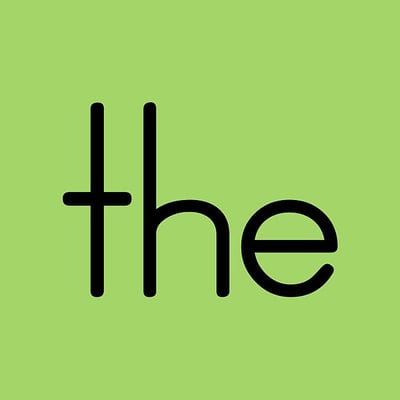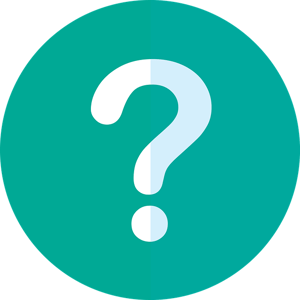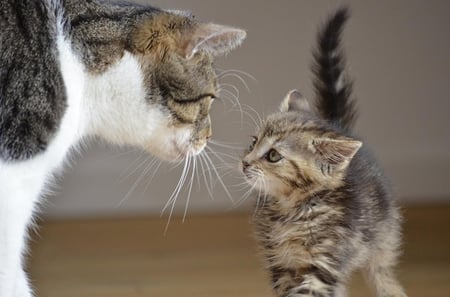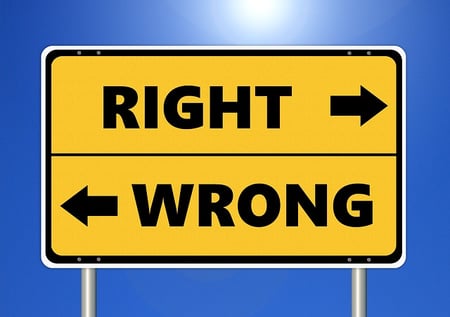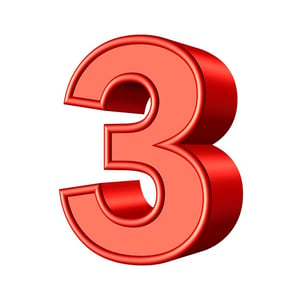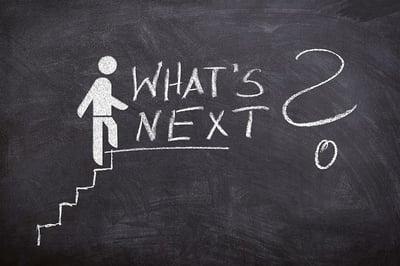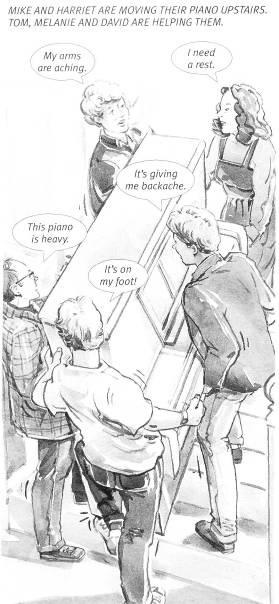When you start breaking it down, the English language is pretty complicated—especially if you’re trying to learn it from scratch! One of the most important English words to understand is the.
But what part of speech is the word the, and when should it be used in a sentence? Is the word the a preposition? Is the a pronoun? Or is the word the considered a different part of speech?
To help you learn exactly how the word the works in the English language, we’re going to do the following in this article:
- Answer the question, «What part of speech is the?»
- Explain how to use the correctly in sentences, with examples
- Provide a full list of other words that are classified as the same part of speech as the in the English language
Okay, let’s get started learning about the word the!
In the English language the word the is classified as an article, which is a word used to define a noun. (More on that a little later.)
But an article isn’t one of the eight parts of speech. Articles are considered a type of adjective, so «the» is technically an adjective as well. However, «the» can also sometimes function as an adverb in certain instances, too.
In short, the word «the» is an article that functions as both an adjective and an adverb, depending on how it’s being used. Having said that, the is most commonly used as an article in the English language. So, if you were wondering, «Is the a pronoun, preposition, or conjunction,» the answer is no: it’s an article, adjective, and an adverb!
While we might think of an article as a story that appears in a newspaper or website, in English grammar, articles are words that help specify nouns.
The as an Article
So what are «articles» in the English language? Articles are words that identify nouns in order to demonstrate whether the noun is specific or nonspecific. Nouns (a person, place, thing, or idea) can be identified by two different types of articles in the English language: definite articles identify specific nouns, and indefinite articles identify nonspecific nouns.
The word the is considered a definite article because it defines the meaning of a noun as one particular thing. It’s an article that gives a noun a definite meaning: a definite article. Generally, definite articles are used to identify nouns that the audience already knows about. Here’s a few examples of how «the» works as a definite article:
We went to the rodeo on Saturday. Did you see the cowboy get trampled by the bull?
This (grisly!) sentence has three instances of «the» functioning as a definite article: the rodeo, the cowboy, and the bull. Notice that in each instance, the comes directly before the noun. That’s because it’s an article’s job to identify nouns.
In each of these three instances, the refers to a specific (or definite) person, place, or thing. When the speaker says the rodeo, they’re talking about one specific rodeo that happened at a certain place and time. The same goes for the cowboy and the bull: these are two specific people/animals that had one kinda terrible thing happen to them!
It can be a bit easier to see how definite articles work if you see them in the same sentence as an indefinite article (a or an). This sentence makes the difference a lot more clear:
A bat flew into the restaurant and made people panic.
Okay. This sentence has two articles in it: a and the. So what’s the difference? Well, you use a when you’re referring to a general, non-specific person, place, or thing because its an indefinite article. So in this case, using a tells us this isn’t a specific bat. It’s just a random bat from the wild that decided to go on an adventure.
Notice that in the example, the writer uses the to refer to the restaurant. That’s because the event happened at a specific time and at a specific place. A bat flew into one particular restaurant to cause havoc, which is why it’s referred to as the restaurant in the sentence.
The last thing to keep in mind is that the is the only definite article in the English language, and it can be used with both singular and plural nouns. This is probably one reason why people make the mistake of asking, «Is the a pronoun?» Since articles, including the, define the meaning of nouns, it seems like they could also be combined with pronouns. But that’s not the case. Just remember: articles only modify nouns.
Adjectives are words that help describe nouns. Because «the» can describe whether a noun is a specific object or not, «the» is also considered an adjective.
The as an Adjective
You know now that the is classified as a definite article and that the is used to refer to a specific person, place, or thing. But defining what part of speech articles are is a little bit tricky.
There are eight parts of speech in the English language: nouns, pronouns, verbs, adverbs, adjectives, prepositions, conjunctions, and interjections. The thing about these eight parts of speech in English is that they contain smaller categories of types of words and phrases in the English language. Articles are considered a type of determiner, which is a type of adjective.
Let’s break down how articles fall under the umbrella of «determiners,» which fall under the umbrella of adjectives. In English, the category of «determiners» includes all words and phrases in the English language that are combined with a noun to express an aspect of what the noun is referring to. Some examples of determiners are the, a, an, this, that, my, their, many, few, several, each, and any. The is used in front of a noun to express that the noun refers to a specific thing, right? So that’s why «the» can be considered a determiner.
And here’s how determiners—including the article the—can be considered adjectives. Articles and other determiners are sometimes classified as adjectives because they describe the nouns that they precede. Technically, the describes the noun it precedes by communicating specificity and directness. When you say, «the duck,» you’re describing the noun «duck» as referring to a specific duck. This is different than saying a duck, which could mean any one duck anywhere in the world!
When «the» comes directly before a word that’s not a noun, then it’s operating as an adverb instead of an adjective.
The as an Adverb
Finally, we mentioned that the can also be used as an adverb, which is one of the eight main parts of speech we outlined above. Adverbs modify or describe verbs, adjectives, or other adverbs, but never modify nouns.
Sometimes, the can be used to modify adverbs or adjectives that occur in the comparative degree. Adverbs or adjectives that compare the amounts or intensity of a feeling, state of being, or action characterizing two or more things are in the comparative degree. Sometimes the appears before these adverbs or adjectives to help convey the comparison!
Here’s an example where the functions as an adverb instead of an article/adjective:
Lainey believes the most outrageous things.
Okay. We know that when the is functioning as an adjective, it comes before a noun in order to clarify whether it’s specific or non-specific. In this case, however, the precedes the word most, which isn’t a noun—it’s an adjective. And since an adverb modifies an adjective, adverb, or verb, that means the functions as an adverb in this sentence.
We know that can be a little complicated, so let’s dig into another example together:
Giovanni’s is the best pizza place in Montana.
The trick to figuring out whether the article the is functioning as an adjective or an adverb is pretty simple: just look at the word directly after the and figure out its part of speech. If that word is a noun, then the is functioning as an adjective. If that word isn’t a noun, then the is functioning like an adverb.
Now, reread the second example. The word the comes before the word best. Is best a noun? No, it isn’t. Best is an adjective, so we know that the is working like an adverb in this sentence.
How to Use The Correctly in Sentences
An important part of answering the question, «What part of speech is the word the?» includes explaining how to use the correctly in a sentence. Articles like the are some of the most common words used in the English language. So you need to know how and when to use it! And since using the as an adverb is less common, we’ll provide examples of how the can be used as an adverb as well.
Using The as an Article
In general, it is correct and appropriate to use the in front of a noun of any kind when you want to convey specificity. It’s often assumed that you use the to refer to a specific person, place, or thing that the person you’re speaking to will already be aware of. Oftentimes, this shared awareness of who, what, or where «the» is referring to is created by things already said in the conversation, or by context clues in a given social situation.
Let’s look at an example here:
Say you’re visiting a friend who just had a baby. You’re sitting in the kitchen at your friend’s house while your friend makes coffee. The baby, who has been peacefully dozing in a bassinet in the living room, begins crying. Your friend turns to you and asks, «Can you hold the baby while I finish doing this?»
Now, because of all of the context surrounding the social situation, you know which baby your friend is referring to when they say, the baby. There’s no need for further clarification, because in this case, the gives enough direct and specific meaning to the noun baby for you to know what to do!
In many cases, using the to define a noun requires less or no awareness of an immediate social situation because people have a shared common knowledge of the noun that the is referring to. Here are two examples:
Are you going to watch the eclipse tomorrow?
Did you hear what the President said this morning?
In the first example, the speaker is referring to a natural phenomenon that most people are aware of—eclipses are cool and rare! When there’s going to be an eclipse, everyone knows about it. If you started a conversation with someone by saying, «Are you going to watch the eclipse tomorrow?» it’s pretty likely they’d know which eclipse the is referring to.
In the second example, if an American speaking to another American mentions what the President said, the other American is likely going to assume that the refers to the President of the United States. Conversely, if two Canadians said this to one another, they would likely assume they’re talking about the Canadian prime minister!
So in many situations, using the before a noun gives that noun specific meaning in the context of a particular social situation.
Using The as an Adverb
Now let’s look at an example of how «the» can be used as an adverb. Take a look at this sample sentence:
The tornado warning made it all the more likely that the game would be canceled.
Remember how we explained that the can be combined with adverbs that are making a comparison of levels or amounts of something between two entities? The example above shows how the can be combined with an adverb in such a situation. The is combined with more and likely to form an adverbial phrase.
So how do you figure this out? Well, if the words immediately after the are adverbs, then the is functioning as an adverb, too!
Here’s another example of how the can be used as an adverb:
I had the worst day ever.
In this case, the is being combined with the adverb worst to compare the speaker’s day to the other days. Compared to all the other days ever, this person’s was the worst…period. Some other examples of adverbs that you might see the combined with include all the better, the best, the bigger, the shorter, and all the sooner.
One thing that can help clarify which adverbs the can be combined with is to check out a list of comparative and superlative adverbs and think about which ones the makes sense with!
3 Articles in the English Language
Now that we’ve answered the question, «What part of speech is the?», you know that the is classified as an article. To help you gain a better understanding of what articles are and how they function in the English language, here’s a handy list of 3 words in the English language that are also categorized as articles.
|
Article |
Type of Article |
What It Does |
Example Sentence |
|
The |
Definite Article |
Modifies nouns by giving them a specific meaning |
Please fold the laundry. Do you want to go to the concert? |
|
A |
Indefinite Article |
Modifies a noun that refers to a general idea; appears before nouns that begin with a consonant. |
Do you want to go to a concert? |
|
An |
Indefinite Article |
Modifies a noun that refers to a general idea; appears before nouns that begin with a vowel. |
Do you want to go to an arcade? Let’s get an iguana. |
What’s Next?
If you’re looking for more grammar resources, be sure to check out our guides on every grammar rule you need to know to ace the SAT (or the ACT)!
Learning more about English grammar can be really helpful when you’re studying a foreign language, too. We highly recommend that you study a foreign language in high school—not only is it great for you, it looks great on college applications, too. If you’re not sure which language to study, check out this helpful article that will make your decision a lot easier.
Speaking of applying for college…one of the most important parts of your application packet is your essay. Check out this expert guide to writing college essays that will help you get into your dream school.
Need more help with this topic? Check out Tutorbase!
Our vetted tutor database includes a range of experienced educators who can help you polish an essay for English or explain how derivatives work for Calculus. You can use dozens of filters and search criteria to find the perfect person for your needs.
Have friends who also need help with test prep? Share this article!
About the Author
Ashley Sufflé Robinson has a Ph.D. in 19th Century English Literature. As a content writer for PrepScholar, Ashley is passionate about giving college-bound students the in-depth information they need to get into the school of their dreams.
Kinds of Words :
Words are divided into different kinds or classes according to the purpose for which they are used. The different kinds of words are called Parts of Speech. They are eight in number.
1. Noun
2. Pronoun
3. Adjective
4. Verb
5. Adverb
6. Preposition
7. Conjunction
8. Interjection
Until we see a word in a sentence, we are often unable to say to what part of speech it belongs.
(i) Water the roses. (Here water is a Verb.)
(ii) Take some water. (Here water is a Noun.)
(iii) We saw a water bird. (Here water is an Adjective.)
A word used for naming anything is called a Noun, as ship, fox, house, man. Hence a noun is the naming word. (The words noun and name are the same basically. But they are differently spelt. The word noun comes from the Latin nomen — name)
To know more about The Noun, CLICK HERE !
A word used instead of a noun is called a Pronoun.
A ship went out to sea and she had all her sails up.
Here the pronoun SHE is used instead of the noun ship and saves its being mentioned twice. Hence a pronoun is a substitute word and its chief use is to avoid the repetition of a
noun.
1. To know more about Pronouns, CLICK HERE !
2. To know more about Pronouns, CLICK HERE !
If we wish to qualify a noun….that is to add something to the meaning of noun, the word used for such a purpose is called an Adjective.
A fine ship went out to sea.
The word Adjective means adding and is so called because it adds something to the meaning of a noun.
The word FINE is an adjective here.
To know more about The Adjective, CLICK HERE !
Words used for predicating (that is, saying something about some person or thing) are called Verbs.
A fine ship went out to sea.
Here the word which predicates or says something about a ship is WENT. This is therefore a verb and thus the predicate of a sentence must be a verb or it must at least contain one.
To know more about Verbs, CLICK HERE !
In the phrase TO SEA, the word TO is called a Preposition. The word expresses the relation in which the thing denoted by SEA stands to the event denoted by WENT OUT.
The noun, pronoun or other noun-equivalent that follows the preposition is called its Object.
The use of a preposition, then, is to show the relation in which the person or thing denoted by its Object stands to something else.
To know more about The Preposition, CLICK HERE!
A Conjunction is a joining word. It joins words and phrases to one another, one clause to another clause or one sentence to another sentence.
(a) He was tall and of distinguished appearance.
(b) May he live long and (may he) die happy!
(c) This is a thing which we all regret but which cannot be helped.
In (a) the adjective TALL is joined to the phrase OF DISTINGUISHED APPEARANCE by the conjunction AND.
In (b) the sentence, ‘may he live long’ is joined by the same conjunction to the sentence ‘may he die happy’.
In (c) the clause, ‘which we all regret’ is joined to the clause ‘which cannot be helped’ by the conjunction BUT.
AND and BUT are Conjunctions.
To know more about The Conjunction, CLICK HERE!
Adverbs, like adjectives, are qualifying words. An adjective, as we have shown, qualifies a noun whereas an adverb usually qualifies a verb, an adjective or another adverb or a preposition.
That very fine ship has already sailed right round the world.
Here VERY is an adverb qualifying the adjective FINE. ALREADY is an adverb qualifying the verb HAS SAILED and RIGHT is an adverb qualifying the preposition ROUND.
As a general rule Adverbs do not qualify Nouns or Pronouns. But such sentences as the following are exceptions.
Qualifying a noun : Even elephants have flown in aeroplanes.
Qualifying a pronoun : Only you can tell us what happened.
To know more about The Adverb, CLICK HERE!
Interjections are not words connected, as other words are, with other parts of a sentence, but mere sounds standing by themselves and thrown into a sentence to express some feeling of the mind.
My son, alas! is not industrious.
Here ALAS is a sound thrown into the sentence to express regret.
To know more about The Interjection, CLICK HERE!
Kinds of Words :
Kinds of Words To HOME PAGE
The Sentences Index
What kind of word the the «a» in a sentence like «I left a few books in the office»? Is this an indefinite article, even if «few» here does not seem to be a noun?
asked Jul 30, 2019 at 12:33
According to the world-renowned Cambridge Grammar of the English Language (Huddleston & Pullum, 2002) the word a in the lexical determinative a few is indeed the indefinite article.
Note that a few books is completely different in structure from the few books, which looks similar but isn’t.
Here is the relevant excerpt (p. 392):
answered Jul 30, 2019 at 15:21
2
Simply an ‘article’ just like in any other use case. If I gave you a few books, and you’d put them away something, I could ask you:
"Hey, where did you put the few books I gave you?"
That would be correct English, even though it would be irrelevant to use ‘few’ in this instance.
Edit: ‘few’ is a numeral, not a noun. This is why it can be used independently, yet also as an adjective.
answered Jul 30, 2019 at 12:39
8
We intuitively know what a WORD is. In written language words are separated by spaces. In spoken language you can sometimes hear a pause between them, although in most cases there’s nothing noticeable that separates words in spoken language.
We can distinguish the orthographic word, the grammatical word and the lexeme.

An ORTHOGRAPHIC WORD is a word form separated by spaces from other orthographic words in written texts and the corresponding form in spoken language.
In the example:
She wanted to win the game.
there are six orthographic words: she, wanted, to, win, the and game.
A GRAMMATICAL WORD is a word form used for a specific grammatical purpose.
For example in the sentence:
That man over there said that he would like to talk to you.
we have the word THAT used twice. This is one orthographic word, but we’re dealing with two grammatical words here: the first THAT is a demonstrative adjective and the other THAT is a conjunction.
A LEXEME is a group of word forms with the same basic meaning that belong to the same word class.
For example the words AM, WAS, IS belong to one lexeme, as they have the same basic meaning and are all verbs. Also the words COME and CAME belong to the same lexeme.
How do they relate to one another?
In many cases orthographic and grammatical words overlap. For example in the sentence:
They bought the house.
there are four orthographic words and four grammatical words, so there is one-to-one correspondence in this case.
But if we slightly modify the sentence like so:
They didn’t buy the house.
there are now five orthographic words and six grammatical words. This is because the orthographic word DIDN’T represents a sequence of two grammatical words: DID + NOT.
It may also be the other way around. In the sentence:
I kind of like it.
there are five orthographic words, but only four grammatical words, because the two orthographic words KIND OF actually represent a single grammatical word.
You can also watch the video version here:
Read
this paragraph and then say which word class each underlined
word belongs to. To help you decide, you
can look back at the examples in B.
Andrew
didn’t go to the cafe
with the other students. Rachel told him they were going there,
but he wanted to
finish
his work. Andrew isn’t very sociable.
He stays in his room and concentrates totally
on his studies. He’s
an excellent
student, but he doesn’t have much fun.
-
to
preposition 7
sociable -
cafe
noun 8
in ………………………
-
the…………………………. 9 and
……………………. -
told………………………… 10 totally
……………………. -
they……………………….
11 an
……………………… -
there
…………………….
12 excellent
……………………. -
he
………………………… 13 but
…………………… -
finish
……………………14 fun
…………………..
2 What kind of word? (b)
Read
this paragraph and then write the words in the spaces below. Write
the first three verbs under ‘Verb’, and so on. Do not write the same
word more than once.
Henry
thinks Claire is wonderful. He loves her madly, and he dreams of
marrying her, but unfortunately he is
rather old for her. Today they are at a cafe with their friends Sarah
and Mark, so Henry can’t get romantic with
Claire. But he might buy her some flowers later.
Verb Noun Adjective Adverb
think Henry
.
Preposition Determiner Pronoun Linking
word
3 Words in sentences (c)
Is
the underlined
word a verb, a noun or an adjective?
-
Shall
we go for a walk? noun -
Shall
we walk
into town? verb
-
Laura
wanted to talk
to Rita. -
Laura
wanted a talk
with Rita. -
The
windows aren’t very clean. -
Doesn’t
anyone clean
the windows? -
We
went to a fabulous show
in New York. -
Laura
wanted to show
Rita her photos. -
Henry
thought
Claire looked beautiful. -
A
strange thought
came into Emma’s head. -
Sarah
is feeling quite tired
now. -
Studying
all night had tired
Andrew out.
2.
Sentence structure: subject, verb, object, etc
Sentence
structure
The
parts of a sentence are the subject, verb, object,
complement and adverbial. A statement begins with the subject and
the verb. There are five main structures which we can use to make a
simple statement.
1 Subject Verb
My
arms are aching. Something
happened.
2 Subject
Verb Object
/
need a
rest.
Five
people are moving the piano.
The
subject and object can be a pronoun (e.g.
I) or a noun phrase (e.g. the
piano).
3 Subject
Verb Complement
This
piano is heavy.
It was
a big problem.
The
complement can be an adjective (e.g. heavy)
or
a noun phrase (e.g. a
big problem). The
complement often comes after be.
It can
also
come after appear,
become, get, feel, look, seem,
stay or sound. For
adjectives and word order
see Unit 104B.
4 Subject Verb
Adverbial
It is
on my foot.
Their
house is nearby.
An
adverbial can be a prepositional phrase (e.g.
on
my foot) or
an adverb (e.g. nearby).
5 Subject
Verb Object
Object
It s
giving
me backache.
David
bought Melanie a present.
We
use two objects after verbs like give
and
send
(see
Unit 3).
B
Adverbials
We
can add adverbials to all the five main structures. My
arms are aching terribly.
I really need
a rest. Of
course this
piano is heavy. Fortunately
their
house is nearby. To
everyone’s surprise, David
actually
bought
Melanie a present yesterday.
34,
36 Word order in questions 113 Adverbs and word order page
377 Seem,
look etc
in American English
2
Exercises
Соседние файлы в предмете [НЕСОРТИРОВАННОЕ]
- #
- #
- #
- #
- #
07.03.2016569.86 Кб71OV.doc
- #
- #
- #
- #
- #
- #
Select your language
Suggested languages for you:
Lerne mit deinen Freunden und bleibe auf dem richtigen Kurs mit deinen persönlichen Lernstatistiken
Jetzt kostenlos anmelden

Words don’t only mean something; they also do something. In the English language, words are grouped into word classes based on their function, i.e. what they do in a phrase or sentence. In total, there are nine word classes in English.
Word class meaning and example
All words can be categorised into classes within a language based on their function and purpose.
An example of various word classes is ‘The cat ate a cupcake quickly.’
-
The = a determiner
-
cat = a noun
-
ate = a verb
-
a = determiner
-
cupcake = noun
-
quickly = an adverb
Word class function
The function of a word class, also known as a part of speech, is to classify words according to their grammatical properties and the roles they play in sentences. By assigning words to different word classes, we can understand how they should be used in context and how they relate to other words in a sentence.
Each word class has its own unique set of characteristics and rules for usage, and understanding the function of word classes is essential for effective communication in English. Knowing our word classes allows us to create clear and grammatically correct sentences that convey our intended meaning.
Word classes in English
In English, there are four main word classes; nouns, verbs, adjectives, and adverbs. These are considered lexical words, and they provide the main meaning of a phrase or sentence.
The other five word classes are; prepositions, pronouns, determiners, conjunctions, and interjections. These are considered functional words, and they provide structural and relational information in a sentence or phrase.
Don’t worry if it sounds a bit confusing right now. Read ahead and you’ll be a master of the different types of word classes in no time!
| All word classes | Definition | Examples of word classification |
| Noun | A word that represents a person, place, thing, or idea. | cat, house, plant |
| Pronoun | A word that is used in place of a noun to avoid repetition. | he, she, they, it |
| Verb | A word that expresses action, occurrence, or state of being. | run, sing, grow |
| Adjective | A word that describes or modifies a noun or pronoun. | blue, tall, happy |
| Adverb | A word that describes or modifies a verb, adjective, or other adverb. | quickly, very |
| Preposition | A word that shows the relationship between a noun or pronoun and other words in a sentence. | in, on, at |
| Conjunction | A word that connects words, phrases, or clauses. | and, or, but |
| Interjection | A word that expresses strong emotions or feelings. | wow, oh, ouch |
| Determiners | A word that clarifies information about the quantity, location, or ownership of the noun | Articles like ‘the’ and ‘an’, and quantifiers like ‘some’ and ‘all’. |
The four main word classes
In the English language, there are four main word classes: nouns, verbs, adjectives, and adverbs. Let’s look at all the word classes in detail.
Nouns
Nouns are the words we use to describe people, places, objects, feelings, concepts, etc. Usually, nouns are tangible (touchable) things, such as a table, a person, or a building.
However, we also have abstract nouns, which are things we can feel and describe but can’t necessarily see or touch, such as love, honour, or excitement. Proper nouns are the names we give to specific and official people, places, or things, such as England, Claire, or Hoover.
Cat
House
School
Britain
Harry
Book
Hatred
‘My sister went to school.‘
Verbs
Verbs are words that show action, event, feeling, or state of being. This can be a physical action or event, or it can be a feeling that is experienced.
Lexical verbs are considered one of the four main word classes, and auxiliary verbs are not. Lexical verbs are the main verb in a sentence that shows action, event, feeling, or state of being, such as walk, ran, felt, and want, whereas an auxiliary verb helps the main verb and expresses grammatical meaning, such as has, is, and do.
Run
Walk
Swim
Curse
Wish
Help
Leave
‘She wished for a sunny day.’
Adjectives
Adjectives are words used to modify nouns, usually by describing them. Adjectives describe an attribute, quality, or state of being of the noun.
Long
Short
Friendly
Broken
Loud
Embarrassed
Dull
Boring
‘The friendly woman wore a beautiful dress.’

Adverbs
Adverbs are words that work alongside verbs, adjectives, and other adverbs. They provide further descriptions of how, where, when, and how often something is done.
Quickly
Softly
Very
More
Too
Loudly
‘The music was too loud.’
All of the above examples are lexical word classes and carry most of the meaning in a sentence. They make up the majority of the words in the English language.
The other five word classes
The other five remaining word classes are; prepositions, pronouns, determiners, conjunctions, and interjections. These words are considered functional words and are used to explain grammatical and structural relationships between words.
For example, prepositions can be used to explain where one object is in relation to another.
Prepositions
Prepositions are used to show the relationship between words in terms of place, time, direction, and agency.
In
At
On
Towards
To
Through
Into
By
With
‘They went through the tunnel.’
Pronouns
Pronouns take the place of a noun or a noun phrase in a sentence. They often refer to a noun that has already been mentioned and are commonly used to avoid repetition.
Chloe (noun) → she (pronoun)
Chloe’s dog → her dog (possessive pronoun)
There are several different types of pronouns; let’s look at some examples of each.
- He, she, it, they — personal pronouns
- His, hers, its, theirs, mine, ours — possessive pronouns
- Himself, herself, myself, ourselves, themselves — reflexive pronouns
- This, that, those, these — demonstrative pronouns
- Anyone, somebody, everyone, anything, something — Indefinite pronouns
- Which, what, that, who, who — Relative pronouns
‘She sat on the chair which was broken.’
Determiners
Determiners work alongside nouns to clarify information about the quantity, location, or ownership of the noun. It ‘determines’ exactly what is being referred to. Much like pronouns, there are also several different types of determiners.
- The, a, an — articles
- This, that, those — you might recognise these for demonstrative pronouns are also determiners
- One, two, three etc. — cardinal numbers
- First, second, third etc. — ordinal numbers
- Some, most, all — quantifiers
- Other, another — difference words
‘The first restaurant is better than the other.’
Conjunctions
Conjunctions are words that connect other words, phrases, and clauses together within a sentence. There are three main types of conjunctions;
-
Coordinating conjunctions — these link independent clauses together.
-
Subordinating conjunctions — these link dependent clauses to independent clauses.
- Correlative conjunctions — words that work in pairs to join two parts of a sentence of equal importance.
For, and, nor, but, or, yet, so — coordinating conjunctions
After, as, because, when, while, before, if, even though — subordinating conjunctions
Either/or, neither/nor, both/and — correlative conjunctions
‘If it rains, I’m not going out.’
Interjections
Interjections are exclamatory words used to express an emotion or a reaction. They often stand alone from the rest of the sentence and are accompanied by an exclamation mark.
Oh
Oops!
Phew!
Ahh!
‘Oh, what a surprise!’
Word class: lexical classes and function classes
A helpful way to understand lexical word classes is to see them as the building blocks of sentences. If the lexical word classes are the blocks themselves, then the function word classes are the cement holding the words together and giving structure to the sentence.

In this diagram, the lexical classes are in blue and the function classes are in yellow. We can see that the words in blue provide the key information, and the words in yellow bring this information together in a structured way.
Word class examples
Sometimes it can be tricky to know exactly which word class a word belongs to. Some words can function as more than one word class depending on how they are used in a sentence. For this reason, we must look at words in context, i.e. how a word works within the sentence. Take a look at the following examples of word classes to see the importance of word class categorisation.
The dog will bark if you open the door.
The tree bark was dark and rugged.
Here we can see that the same word (bark) has a different meaning and different word class in each sentence. In the first example, ‘bark’ is used as a verb, and in the second as a noun (an object in this case).
I left my sunglasses on the beach.
The horse stood on Sarah’s left foot.
In the first sentence, the word ‘left’ is used as a verb (an action), and in the second, it is used to modify the noun (foot). In this case, it is an adjective.
I run every day
I went for a run
In this example, ‘run’ can be a verb or a noun.
Word Class — Key takeaways
-
We group words into word classes based on the function they perform in a sentence.
-
The four main word classes are nouns, adjectives, verbs, and adverbs. These are lexical classes that give meaning to a sentence.
-
The other five word classes are prepositions, pronouns, determiners, conjunctions, and interjections. These are function classes that are used to explain grammatical and structural relationships between words.
-
It is important to look at the context of a sentence in order to work out which word class a word belongs to.
Frequently Asked Questions about Word Class
A word class is a group of words that have similar properties and play a similar role in a sentence.
Some examples of how some words can function as more than one word class include the way ‘run’ can be a verb (‘I run every day’) or a noun (‘I went for a run’). Similarly, ‘well’ can be an adverb (‘He plays the guitar well’) or an adjective (‘She’s feeling well today’).
The nine word classes are; Nouns, adjectives, verbs, adverbs, prepositions, pronouns, determiners, conjunctions, interjections.
Categorising words into word classes helps us to understand the function the word is playing within a sentence.
Parts of speech is another term for word classes.
The different groups of word classes include lexical classes that act as the building blocks of a sentence e.g. nouns. The other word classes are function classes that act as the ‘glue’ and give grammatical information in a sentence e.g. prepositions.
The word classes for all, that, and the is:
‘All’ = determiner (quantifier)
‘That’ = pronoun and/or determiner (demonstrative pronoun)
‘The’ = determiner (article)
Final Word Class Quiz
Word Class Quiz — Teste dein Wissen
Question
A word can only belong to one type of noun. True or false?
Show answer
Answer
This is false. A word can belong to multiple categories of nouns and this may change according to the context of the word.
Show question
Question
Name the two principal categories of nouns.
Show answer
Answer
The two principal types of nouns are ‘common nouns’ and ‘proper nouns’.
Show question
Question
Which of the following is an example of a proper noun?
Show answer
Question
Name the 6 types of common nouns discussed in the text.
Show answer
Answer
Concrete nouns, abstract nouns, countable nouns, uncountable nouns, collective nouns, and compound nouns.
Show question
Question
What is the difference between a concrete noun and an abstract noun?
Show answer
Answer
A concrete noun is a thing that physically exists. We can usually touch this thing and measure its proportions. An abstract noun, however, does not physically exist. It is a concept, idea, or feeling that only exists within the mind.
Show question
Question
Pick out the concrete noun from the following:
Show answer
Question
Pick out the abstract noun from the following:
Show answer
Question
What is the difference between a countable and an uncountable noun? Can you think of an example for each?
Show answer
Answer
A countable noun is a thing that can be ‘counted’, i.e. it can exist in the plural. Some examples include ‘bottle’, ‘dog’ and ‘boy’. These are often concrete nouns.
An uncountable noun is something that can not be counted, so you often cannot place a number in front of it. Examples include ‘love’, ‘joy’, and ‘milk’.
Show question
Question
Pick out the collective noun from the following:
Show answer
Question
What is the collective noun for a group of sheep?
Show answer
Answer
The collective noun is a ‘flock’, as in ‘flock of sheep’.
Show question
Question
The word ‘greenhouse’ is a compound noun. True or false?
Show answer
Answer
This is true. The word ‘greenhouse’ is a compound noun as it is made up of two separate words ‘green’ and ‘house’. These come together to form a new word.
Show question
Question
What are the adjectives in this sentence?: ‘The little boy climbed up the big, green tree’
Show answer
Answer
The adjectives are ‘little’ and ‘big’, and ‘green’ as they describe features about the nouns.
Show question
Question
Place the adjectives in this sentence into the correct order: the wooden blue big ship sailed across the Indian vast scary ocean.
Show answer
Answer
The big, blue, wooden ship sailed across the vast, scary, Indian ocean.
Show question
Question
What are the 3 different positions in which an adjective can be placed?
Show answer
Answer
An adjective can be placed before a noun (pre-modification), after a noun (post-modification), or following a verb as a complement.
Show question
Question
In this sentence, does the adjective pre-modify or post-modify the noun? ‘The unicorn is angry’.
Show answer
Answer
The adjective ‘angry’ post-modifies the noun ‘unicorn’.
Show question
Question
In this sentence, does the adjective pre-modify or post-modify the noun? ‘It is a scary unicorn’.
Show answer
Answer
The adjective ‘scary’ pre-modifies the noun ‘unicorn’.
Show question
Question
What kind of adjectives are ‘purple’ and ‘shiny’?
Show answer
Answer
‘Purple’ and ‘Shiny’ are qualitative adjectives as they describe a quality or feature of a noun
Show question
Question
What kind of adjectives are ‘ugly’ and ‘easy’?
Show answer
Answer
The words ‘ugly’ and ‘easy’ are evaluative adjectives as they give a subjective opinion on the noun.
Show question
Question
Which of the following adjectives is an absolute adjective?
Show answer
Question
Which of these adjectives is a classifying adjective?
Show answer
Question
Convert the noun ‘quick’ to its comparative form.
Show answer
Answer
The comparative form of ‘quick’ is ‘quicker’.
Show question
Question
Convert the noun ‘slow’ to its superlative form.
Show answer
Answer
The comparative form of ‘slow’ is ‘slowest’.
Show question
Question
What is an adjective phrase?
Show answer
Answer
An adjective phrase is a group of words that is ‘built’ around the adjective (it takes centre stage in the sentence). For example, in the phrase ‘the dog is big’ the word ‘big’ is the most important information.
Show question
Question
Give 2 examples of suffixes that are typical of adjectives.
Show answer
Answer
Suffixes typical of adjectives include -able, -ible, -ful, -y, -less, -ous, -some, -ive, -ish, -al.
Show question
Question
What is the difference between a main verb and an auxiliary verb?
Show answer
Answer
A main verb is a verb that can stand on its own and carries most of the meaning in a verb phrase. For example, ‘run’, ‘find’. Auxiliary verbs cannot stand alone, instead, they work alongside a main verb and ‘help’ the verb to express more grammatical information e.g. tense, mood, possibility.
Show question
Question
What is the difference between a primary auxiliary verb and a modal auxiliary verb?
Show answer
Answer
Primary auxiliary verbs consist of the various forms of ‘to have’, ‘to be’, and ‘to do’ e.g. ‘had’, ‘was’, ‘done’. They help to express a verb’s tense, voice, or mood. Modal auxiliary verbs show possibility, ability, permission, or obligation. There are 9 auxiliary verbs including ‘could’, ‘will’, might’.
Show question
Question
Which of the following are primary auxiliary verbs?
-
Is
-
Play
-
Have
-
Run
-
Does
-
Could
Show answer
Answer
The primary auxiliary verbs in this list are ‘is’, ‘have’, and ‘does’. They are all forms of the main primary auxiliary verbs ‘to have’, ‘to be’, and ‘to do’. ‘Play’ and ‘run’ are main verbs and ‘could’ is a modal auxiliary verb.
Show question
Question
Name 6 out of the 9 modal auxiliary verbs.
Show answer
Answer
Answers include: Could, would, should, may, might, can, will, must, shall
Show question
Question
‘The fairies were asleep’. In this sentence, is the verb ‘were’ a linking verb or an auxiliary verb?
Show answer
Answer
The word ‘were’ is used as a linking verb as it stands alone in the sentence. It is used to link the subject (fairies) and the adjective (asleep).
Show question
Question
What is the difference between dynamic verbs and stative verbs?
Show answer
Answer
A dynamic verb describes an action or process done by a noun or subject. They are thought of as ‘action verbs’ e.g. ‘kick’, ‘run’, ‘eat’. Stative verbs describe the state of being of a person or thing. These are states that are not necessarily physical action e.g. ‘know’, ‘love’, ‘suppose’.
Show question
Question
Which of the following are dynamic verbs and which are stative verbs?
-
Drink
-
Prefer
-
Talk
-
Seem
-
Understand
-
Write
Show answer
Answer
The dynamic verbs are ‘drink’, ‘talk’, and ‘write’ as they all describe an action. The stative verbs are ‘prefer’, ‘seem’, and ‘understand’ as they all describe a state of being.
Show question
Question
What is an imperative verb?
Show answer
Answer
Imperative verbs are verbs used to give orders, give instructions, make a request or give warning. They tell someone to do something. For example, ‘clean your room!’.
Show question
Question
Inflections give information about tense, person, number, mood, or voice. True or false?
Show answer
Question
What information does the inflection ‘-ing’ give for a verb?
Show answer
Answer
The inflection ‘-ing’ is often used to show that an action or state is continuous and ongoing.
Show question
Question
How do you know if a verb is irregular?
Show answer
Answer
An irregular verb does not take the regular inflections, instead the whole word is spelt a different way. For example, begin becomes ‘began’ or ‘begun’. We can’t add the regular past tense inflection -ed as this would become ‘beginned’ which doesn’t make sense.
Show question
Question
Suffixes can never signal what word class a word belongs to. True or false?
Show answer
Answer
False. Suffixes can signal what word class a word belongs to. For example, ‘-ify’ is a common suffix for verbs (‘identity’, ‘simplify’)
Show question
Question
A verb phrase is built around a noun. True or false?
Show answer
Answer
False. A verb phrase is a group of words that has a main verb along with any other auxiliary verbs that ‘help’ the main verb. For example, ‘could eat’ is a verb phrase as it contains a main verb (‘could’) and an auxiliary verb (‘could’).
Show question
Question
Which of the following are multi-word verbs?
-
Shake
-
Rely on
-
Dancing
-
Look up to
Show answer
Answer
The verbs ‘rely on’ and ‘look up to’ are multi-word verbs as they consist of a verb that has one or more prepositions or particles linked to it.
Show question
Question
What is the difference between a transition verb and an intransitive verb?
Show answer
Answer
Transitive verbs are verbs that require an object in order to make sense. For example, the word ‘bring’ requires an object that is brought (‘I bring news’). Intransitive verbs do not require an object to complete the meaning of the sentence e.g. ‘exist’ (‘I exist’).
Show question
Answer
An adverb is a word that gives more information about a verb, adjective, another adverb, or a full clause.
Show question
Question
What are the 3 ways we can use adverbs?
Show answer
Answer
We can use adverbs to modify a word (modifying adverbs), to intensify a word (intensifying adverbs), or to connect two clauses (connecting adverbs).
Show question
Question
What are modifying adverbs?
Show answer
Answer
Modifying adverbs are words that modify verbs, adjectives, or other adverbs. They add further information about the word.
Show question
Question
‘Additionally’, ‘likewise’, and ‘consequently’ are examples of connecting adverbs. True or false?
Show answer
Answer
True! Connecting adverbs are words used to connect two independent clauses.
Show question
Question
What are intensifying adverbs?
Show answer
Answer
Intensifying adverbs are words used to strengthen the meaning of an adjective, another adverb, or a verb. In other words, they ‘intensify’ another word.
Show question
Question
Which of the following are intensifying adverbs?
-
Calmly
-
Incredibly
-
Enough
-
Greatly
Show answer
Answer
The intensifying adverbs are ‘incredibly’ and ‘greatly’. These strengthen the meaning of a word.
Show question
Question
Name the main types of adverbs
Show answer
Answer
The main adverbs are; adverbs of place, adverbs of time, adverbs of manner, adverbs of frequency, adverbs of degree, adverbs of probability, and adverbs of purpose.
Show question
Question
What are adverbs of time?
Show answer
Answer
Adverbs of time are the ‘when?’ adverbs. They answer the question ‘when is the action done?’ e.g. ‘I’ll do it tomorrow’
Show question
Question
Which of the following are adverbs of frequency?
-
Usually
-
Patiently
-
Occasionally
-
Nowhere
Show answer
Answer
The adverbs of frequency are ‘usually’ and ‘occasionally’. They are the ‘how often?’ adverbs. They answer the question ‘how often is the action done?’.
Show question
Question
What are adverbs of place?
Show answer
Answer
Adverbs of place are the ‘where?’ adverbs. They answer the question ‘where is the action done?’. For example, ‘outside’ or ‘elsewhere’.
Show question
Question
Which of the following are adverbs of manner?
-
Never
-
Carelessly
-
Kindly
-
Inside
Show answer
Answer
The words ‘carelessly’ and ‘kindly’ are adverbs of manner. They are the ‘how?’ adverbs that answer the question ‘how is the action done?’.
Show question
Discover the right content for your subjects
No need to cheat if you have everything you need to succeed! Packed into one app!
Study Plan
Be perfectly prepared on time with an individual plan.
Quizzes
Test your knowledge with gamified quizzes.
Flashcards
Create and find flashcards in record time.
Notes
Create beautiful notes faster than ever before.
Study Sets
Have all your study materials in one place.
Documents
Upload unlimited documents and save them online.
Study Analytics
Identify your study strength and weaknesses.
Weekly Goals
Set individual study goals and earn points reaching them.
Smart Reminders
Stop procrastinating with our study reminders.
Rewards
Earn points, unlock badges and level up while studying.
Magic Marker
Create flashcards in notes completely automatically.
Smart Formatting
Create the most beautiful study materials using our templates.
Sign up to highlight and take notes. It’s 100% free.
This website uses cookies to improve your experience. We’ll assume you’re ok with this, but you can opt-out if you wish. Accept
Privacy & Cookies Policy

